Is your partner suffering from a swollen testicle that appears like a big water balloon? Watch out! Your man may be in the initial stages of Hydrocele. Read on and know what is Hydrocele, its causes, symptoms, diagnosis and treatment.
What is Hydrocele (Processus Vaginalis)?
Page Contents
- 1 What is Hydrocele (Processus Vaginalis)?
- 2 Hydrocele Symptoms
- 3 Causes of Hydrocele
- 4 Hydrocele Diagnosis
- 5 Hydrocele Differential Diagnosis
- 6 Hydrocele Surgery and Treatment
- 7 Hydrocele Complications
- 8 Hydrocele Operation Side Effects
- 9 Does Hydrocele Go Away?
- 10 Hydrocele And Infertility
- 11 Hydrocele Recovery Time
- 12 Hydrocele Management
- 13 Hydrocele Left Untreated
- 14 Hydrocele Pictures
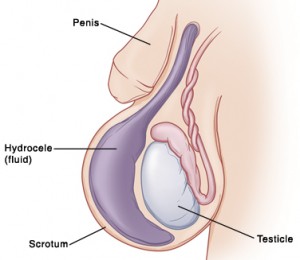
Picture 1 – Hydrocele
Source – mountnittany
Hydrocele is one of the most discomforting medical conditions. It is characterized by the accumulation of serous liquid in a body cavity thus leading to the development of a fluid-filled sac along the spermatic cord inside the scrotum.
Hydrocele is also known as Patent Processus Vaginalis or Processus Vaginalis.
Hydrocele Symptoms
Hydrocele appears as a painless lump and may arise on one or both sides of the testicle. Hydrocele in newborns is quite common. These arise in a few children after birth and may go away in a few months without any complications.
Causes of Hydrocele
In case of normal, healthy individuals the testicles go down through a tube from the abdomen to the scrotum. Hydrocele sac arises when this tube fails to close in the scrotum. As a result, serous fluid from the abdomen drains into the scrotum and starts to accumulate. The accumulation of this fluid causes inflammation of the scrotum.
The abnormal accumulation of serous fluid may arise due to inflammation of or injury to the Epididymis (the tubule carrying sperm to vas deferens) or testicle. Obstruction of blood or fluid inside the spermatic cord can also be one of the prime Hydrocele causes. This kind of Hydrocele formation is more common in aged people.
In some cases, Hydrocele formation is also associated with an Inguinal Hernia. It is a type of Hernia in which an intestinal loop moves into the inguinal canal. It is the most common kind of Hernia in males.
Hydrocele Diagnosis
Hydrocele disease is mainly diagnosed with the aid of physical examination. Doctors usually find a hard swollen scrotum on examination. In many cases, the testicle cannot be felt due to the surrounding fluid. Applying pressure on the scrotum or abdomen can increase or decrease the size of the fluid-filled sac.
In some cases, Hydrocele examination is done by Transillumination. The process involves shining a flashlight through the inflamed part of the scrotum. Light rays will pass through the scrotum if it is filled with clear fluid as in the case of Hydrocele.
Other Hydrocele Tests
Often, ultrasound becomes necessary to diagnose any pathological conditions. This helps distinguish Hydroceles from Spermatoceles. Duplex Sonography may be carried out to get information about blood flow in the testicles.
Hydrocele Differential Diagnosis
The differential diagnosis for Hydrocele involves distinguishing the disease from other conditions that give rise to scrotal swelling such as
- Hernia
- Testicular Teratoma
- Epididymo-Orchitis
- Epididymal Cyst
- Varicocele
- Fournier’s Gangrene
- Morgagni Hydatid
Hydrocele Surgery and Treatment
Hydroceles are usually non-dangerous and require no treatment unless they are large enough to cause embarrassment or discomfort. Treatment also becomes necessary when they get large enough to obstruct blood supply to the testicles. A simple Hydrocele often goes away without any treatment. In case of a large Hydrocele treatment can be done in any of the following ways:
Hydrocele Needle Aspiration
In this process, a fine surgical needle is used to drain the fluid from the swollen testicular sacs. Hydrocele aspiration is particularly used on patients who may suffer from health risks due to surgery. Hydrocele drainage by aspiration is an effective way of Hydrocele cure without surgery.
Use of Medications
Medicines may be injected to shut the opening after aspiration. Use of drugs helps prevent accumulation of fluids in testicles in future.
Surgery
A surgical operation becomes necessary in case of Hydrocele associated with an Inguinal Hernia. A herniated Hydrocele should be surgically removed as fast as possible. Hydrocele surgery is also necessary if the condition does not resolve itself even after a few months. A surgical method known as Hydrocelectomy is often carried out to remedy the condition. Hydrocele surgery is a simple process but needs to be performed by a skilled surgeon.
Hydrocele Complications
Treatment of Hydrocele growth can give rise to a number of complications. Aspiration of Hydrocele fluid and medication use may also lead to problems like Fibrosis (development of excess fibrous connective tissue), infection, pain in scrotal region or even recurrence of Hydrocele. Infection is uncommon in case of this disease though an imperfect Hydrocele operation may give rise to it.
Hydrocele Operation Side Effects
An improperly performed Hydrocele surgery may cause health issues like
- Infection
- Injury to the testicular structures
- Trauma of the scrotal tissues and
- Blood clots within the scrotum
Does Hydrocele Go Away?
If properly removed by an expert surgeon, Hydrocele lumps go away without any recurrence. In simple cases of Hydrocele, the swelling subsides and the lump goes away after some months without causing any trouble. Most congenital cases of Hydrocele resolve by a year.
Hydrocele And Infertility
In case of an incorrect Hydrocele operation procedure, bilateral injury to the vas deferens can result in infertility. Infertility is however, rare in Hydrocele. It is only in rare cases that infertility arises as one of the Hydrocele surgery side effects.
Hydrocele Recovery Time
Following Hydrocele surgery recovery takes little time. Hydrocele patients can get back to active lifestyle almost immediately. Recovery does not take long though the operated area may take some time to heal. Hydrocele after surgery is usually non-recurring unless performed by inexperienced hands.
Hydrocele Management
Hydrocele in infants is usually benign and resolves within a year. Parents need to take note of the testicles and check whether there is a growth of the lump. Testicular enlargement requires treatment and in some cases, surgical operation.
Hydrocele Left Untreated
Unless treated in time, Hydrocele can lead to infection of the serous fluid in the testes and Testicular Atrophy. The lump may swell and block the blood supply to the testicles. This may eventually result in infertility.
Hydrocele Pictures
Want to know how Hydrocele looks like? Here are some useful Hydrocele images for your reference. Check these out and get a visual idea about the appearance of this condition.
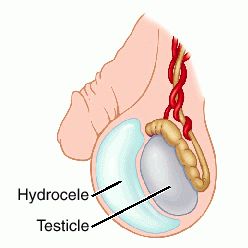
Picture 2 – Hydrocele Photo
Source – blogspot
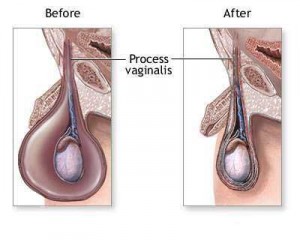
Picture 3 – Hydrocele Image
Source – direct-healthcare
If there is no immediate treatment of Hydrocele adults can suffer from great embarrassment and discomfort in the later stages. If your partner is having a growing testicular lump or pain in the scrotum, it is best to go for immediate medical treatment. Timely Hydrocele cure can help avert a lot of discomfiture in future and ensure faster recovery in patients.
References:
https://health.google.com/health/ref/Hydrocele
http://www.medindia.net/patients/patientinfo/hydrocele-complications.htm
http://en.wikipedia.org/wiki/Hydrocele
http://www.wisegeek.com/what-is-a-hydrocele.htm
http://www.medindia.net/patients/patientinfo/hydrocele-after-surgery.htm
http://www.urologychannel.com/hydrocele/symptoms-treatments.shtml
http://www.patient.co.uk/doctor/Hydrocele.htm

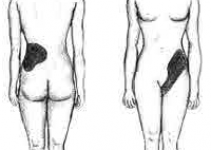
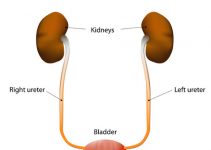
Bilateral surgery was performed 15/04/2011. I still have swolen both testicles. How long it needs to be healed? Thanks, Mark
Aprompt response would be much appreciated
Sir after surgery I am wearing small fetting like gym sappoter .
It is harmful full for testis or not.
Just had hydrocelectomy done. In recovery mode. Thanks for information.
So where do they actually Make the incision for this operation ,,,,,I am having it done in the near future
I had hydrocele surgery on 7/05/16. It was not successful-my scrotum kept filling up with liquid within 1-2 weeks. They aspirated it several times. One testicle was to blame & it was really inflamed. They injected antibiotics (which burned like hell), but that did not resolve the problem. On December 1, they removed that testicle. Now, time will tell. I see the surgeon this week.
does anyone know if probiotics contribute to the development of a hydrocele. I started taking Probiotics for the first time in my life in Feb. of 2016 and developed a hyrdrocele by May. If there is no known connection, I’d like to start taking Probiotics again as I have recurring stomach issues. The cause and effect possibility is making me adverse to that now.
i have a son 2 year old have hydrocel in testies. surgery is comming soon how many days to recover it?
Sir i have hydrocele how can i solve my problem and plzz tell me name of dr which dr is best for hydrocele treatment.